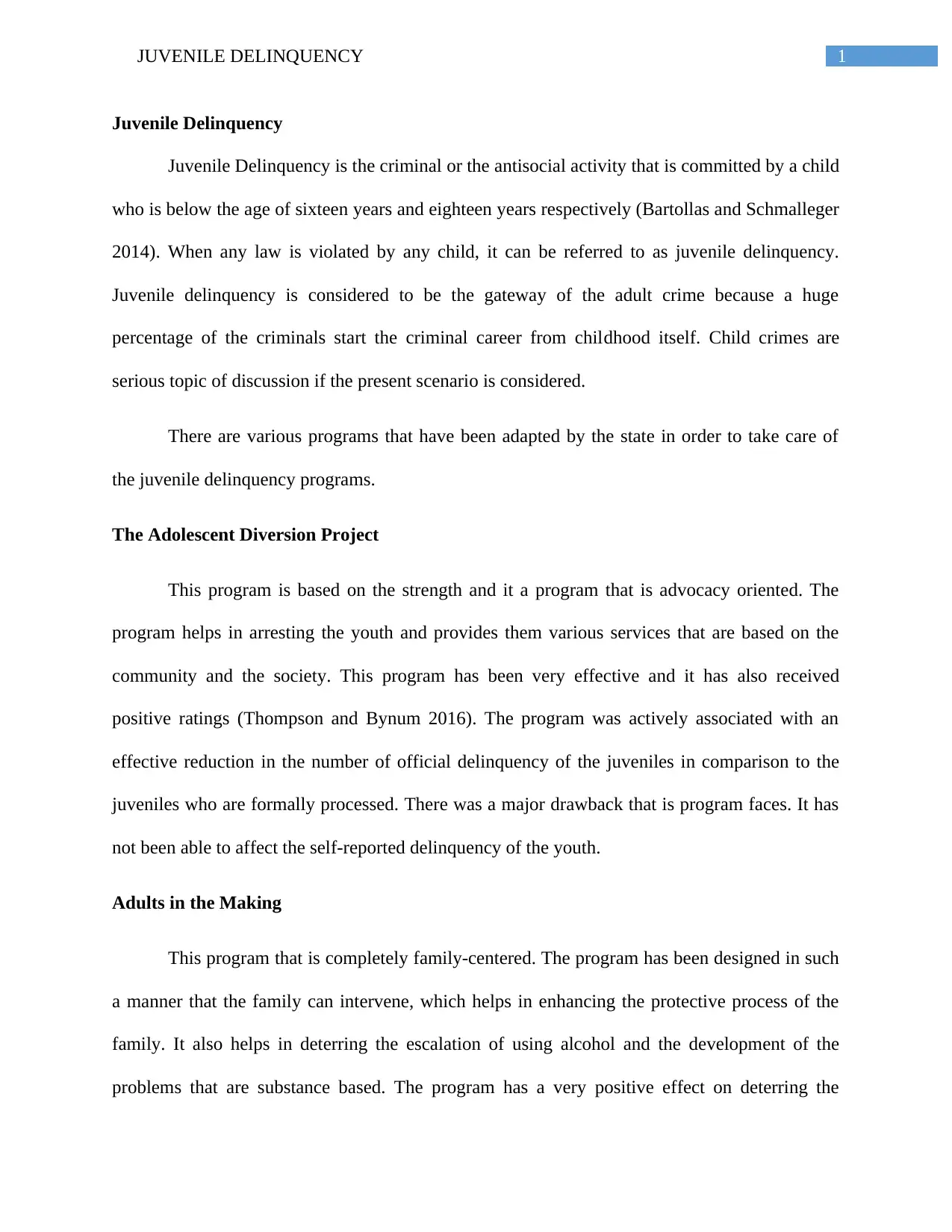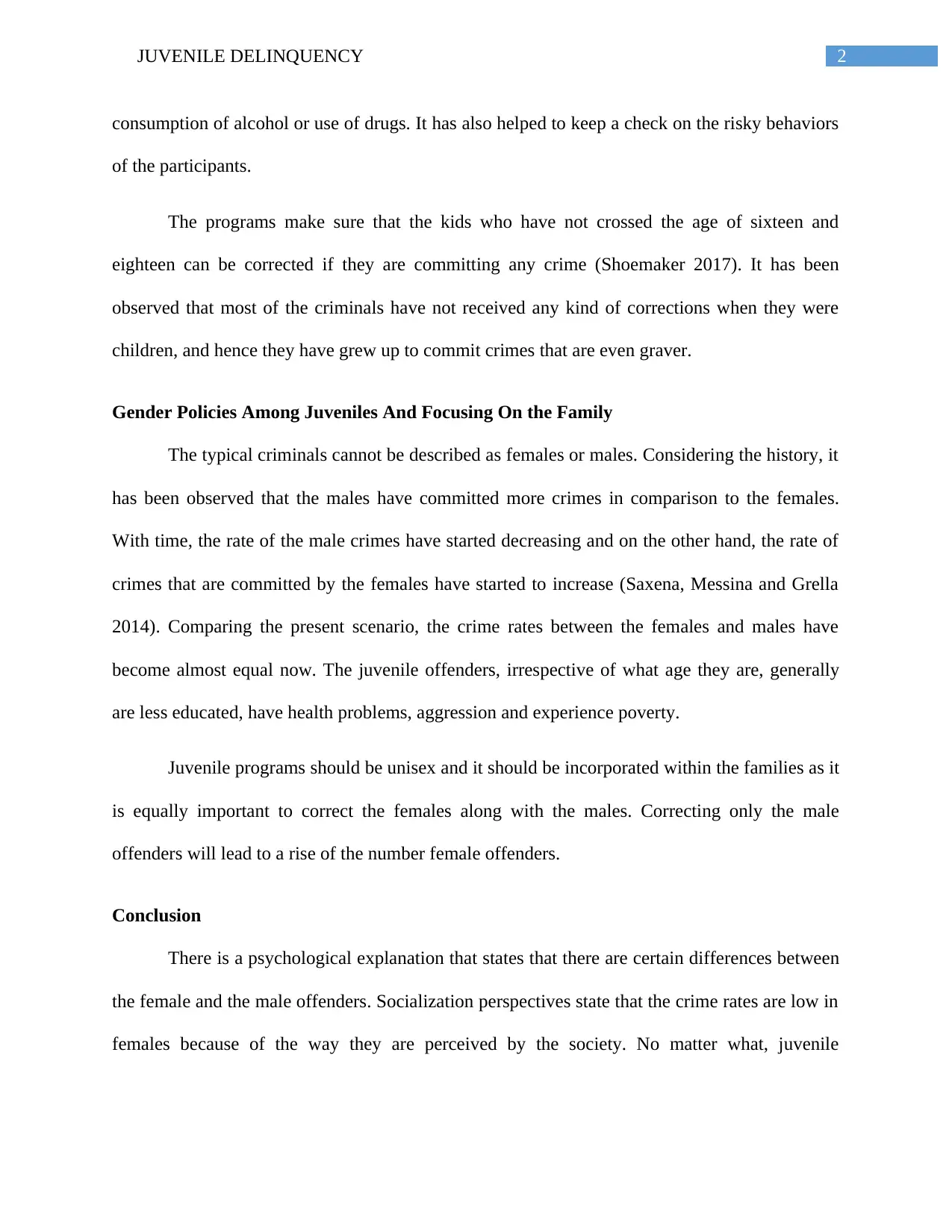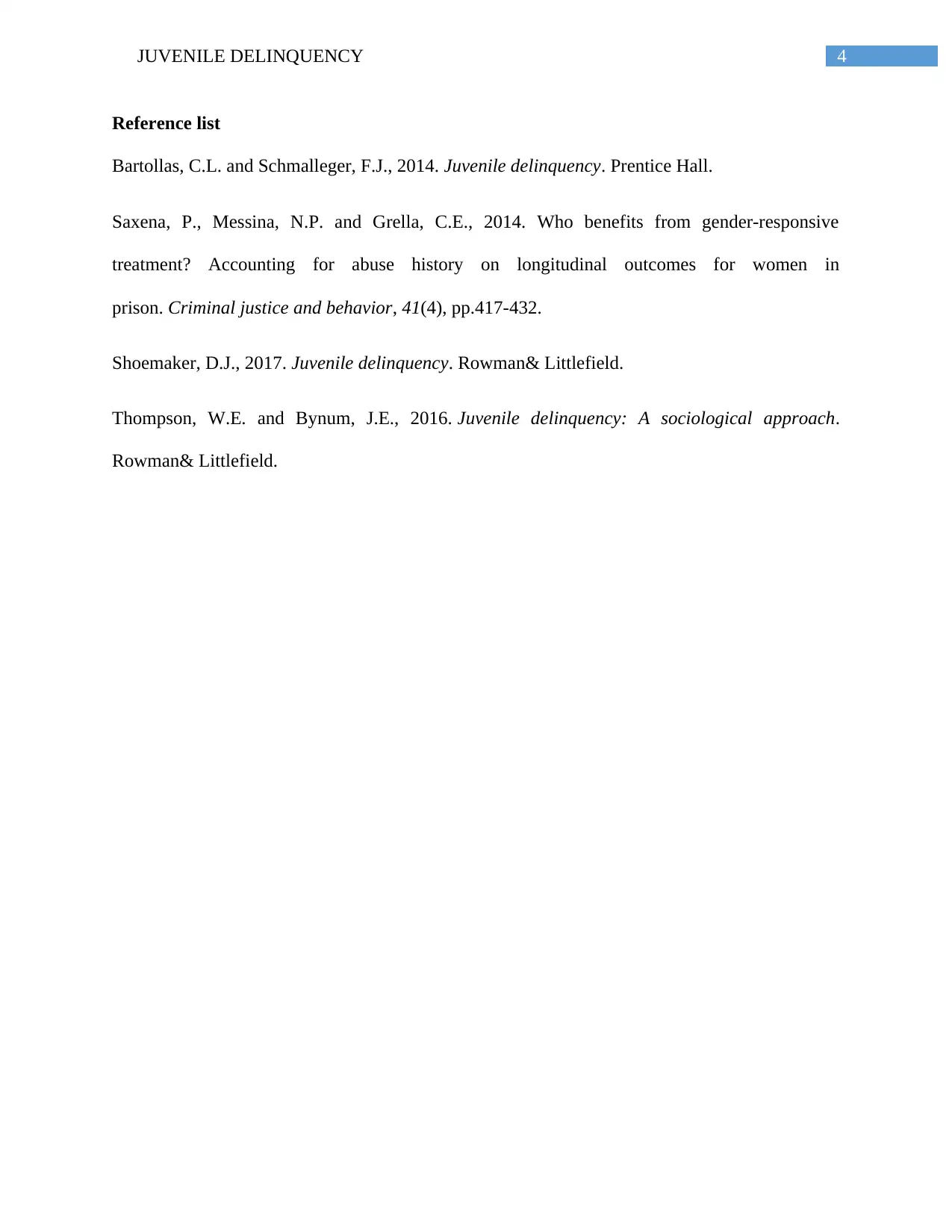Essay on Juvenile Delinquency, Programs, Gender Policies, and Family
VerifiedAdded on 2020/05/28
|5
|753
|55
Essay
AI Summary
This essay delves into the multifaceted issue of juvenile delinquency, examining its definition as criminal or antisocial behavior committed by individuals under a specific age. It highlights the significance of addressing juvenile crime as a potential gateway to adult criminal activity. The essay analyzes two key programs: the Adolescent Diversion Project, which focuses on community-based services, and the family-centered "Adults in the Making" program, designed to deter substance abuse and risky behaviors. It also addresses gender policies, noting the evolving trends in crime rates between males and females and advocating for unisex juvenile programs that incorporate family intervention to effectively address the issue. The essay concludes by emphasizing the importance of comprehensive programs that consider both genders to help young offenders become better individuals. The essay uses references from various academic sources.
1 out of 5












![[object Object]](/_next/static/media/star-bottom.7253800d.svg)